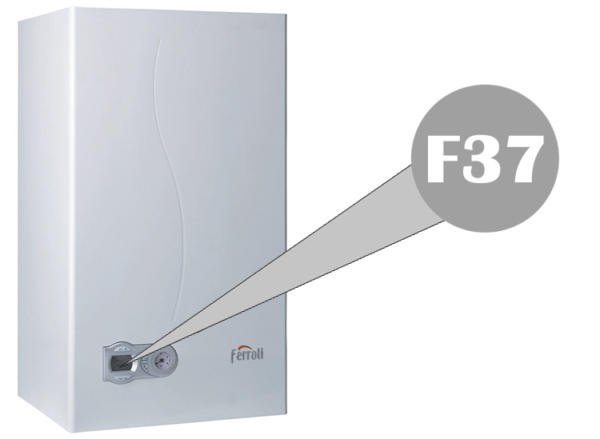
In the realm of residential heating systems, boilers play a critical role. Among the plethora of boiler manufacturers, the Italian giant, Ferroli, has made its mark by providing reliable and efficient heating appliances. Nonetheless, even the most dependable systems can occasionally stumble, presenting challenges such as the F37 fault code – a recurrent issue faced by Ferroli boiler owners. This piece aims to unravel this complex code, offering a comprehensive insight into its meaning and potential solutions.
Unraveling the F37 Fault Code Enigma
When the boiler’s control panel flashes the F37 fault code, it signals a specific issue with the boiler’s water pressure. To put it simply, it flags that the boiler’s internal pressure has slumped below the necessary operational range. Ideally, when the heating system is off, the boiler’s pressure should stay within 1 to 1.5 bars. A notable drop below this benchmark will cause the F37 fault code to be activated.
Triggers for the F37 Fault Code
Various factors can cause the boiler pressure to fall, leading to the emergence of the F37 fault code:
- Potential Leakages: One of the most frequent culprits behind diminished boiler pressure is leakage in the heating system. These leaks can emerge within the boiler, radiators, or connecting pipework.
- Radiator Maintenance: If you’ve recently bled your radiators to expel trapped air, it could result in a temporary dip in pressure, which could activate the F37 code.
- Ageing Components: Over the years, boiler components such as the pressure relief valve can deteriorate, causing a gradual decline in pressure.
Demystifying the F37 Fault Code
Confronted with the F37 fault code? Here’s a step-by-step guide:
- Pressure Gauge Verification: Start by confirming the pressure drop using the boiler’s pressure gauge.
- Leakage Scan: If the pressure is indeed below par, examine the system for potential leakages. Signs might include water accumulation around the boiler or radiators.
- Boiler Refilling: If the inspection doesn’t reveal any leaks, or after they’ve been professionally repaired, try refilling the boiler. Most Ferroli boilers feature a built-in filling loop for this purpose. However, it’s vital to follow the instructions provided in the user manual to avoid overfilling.
- Professional Intervention: If refilling doesn’t resolve the issue or you are uncomfortable with DIY repairs, call a Gas Safe registered engineer. They can conduct a detailed inspection, identify any malfunctions, and implement suitable repairs.
Averting the F37 Fault Code
Preventive maintenance is key in avoiding issues like the F37 fault code. Regular professional servicing can help detect and rectify minor problems before they escalate. Additionally, a persistent drop in pressure, despite refilling, might suggest a more significant issue. In such cases, promptly contact a heating engineer.
To sum up, the F37 fault code may seem perplexing at first, but with a clear understanding of its implications and remedies, you can minimize its impact. Regular upkeep, speedy leak repair, and timely boiler refills are essential to ensure your Ferroli boiler operates smoothly. But when in doubt, don’t hesitate to seek professional help.